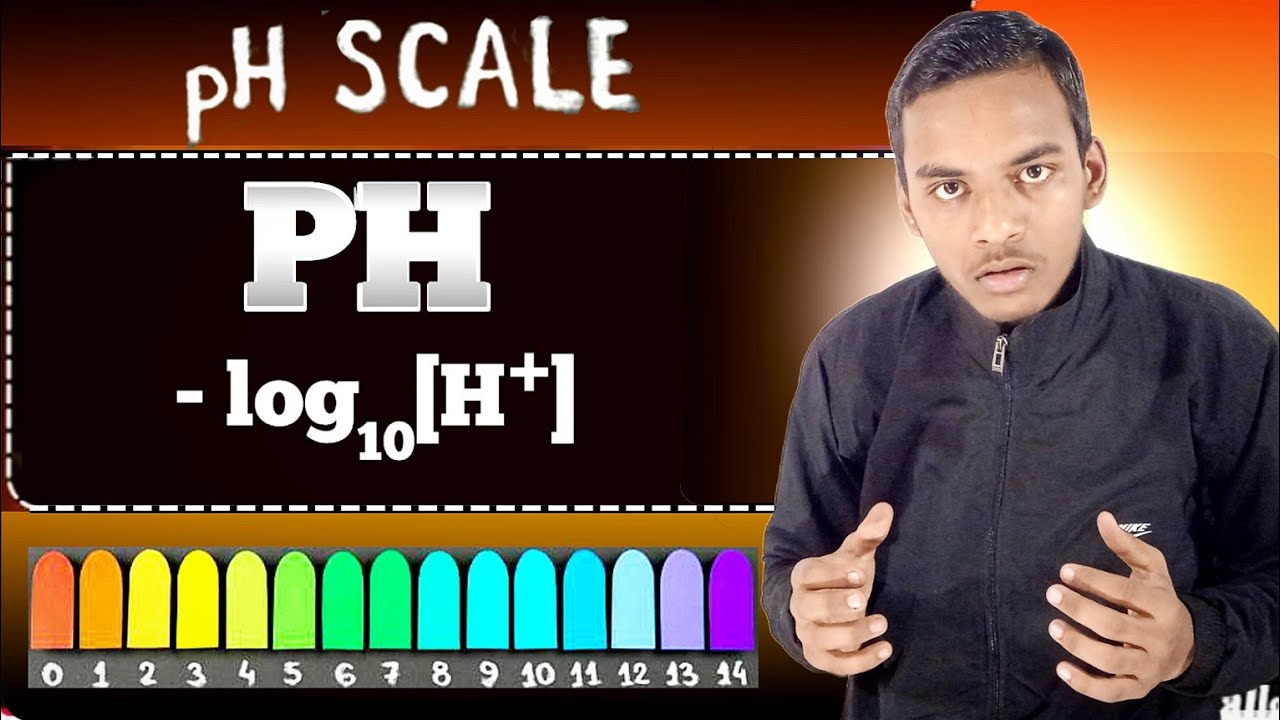What Is The pH Scale | Acids, Bases & Alkalis | Chemistry | FuseSchool
Summary
TLDRThis educational video explores the pH scale and the use of indicators to determine the acidity or alkalinity of substances. It explains how litmus paper, either red or blue, changes color in response to acids or alkalis, but cannot quantify the pH level. The video then introduces the universal indicator, a mixture of dyes that can indicate the pH value of a solution across the full 0 to 14 scale. It also touches on the use of a pH meter for more precise measurements. Examples of various substances' pH levels, such as stomach acid, milk, and seawater, are provided to illustrate the concept.
Takeaways
- 🔬 The pH scale is a measure of how acidic or alkaline a substance is, ranging from 0 (extremely acidic) to 14 (extremely alkaline), with 7 being neutral.
- 🌈 Indicators are substances that change color in the presence of acids or alkalis, helping to identify their properties.
- 🍂 Litmus paper, derived from lichens, is a simple indicator that turns red in acids and blue in alkalis.
- 📄 Red litmus paper changes color to blue in alkaline conditions, while blue litmus paper changes to red in acidic conditions.
- 🚫 Litmus paper cannot provide the degree of acidity or alkalinity; it only indicates the presence of an acid or alkali.
- 🌈 Universal indicator is a more complex mixture that can show the pH value of a solution through various color changes.
- 🔍 The pH scale is used to measure the exact level of acidity or alkalinity, with substances like stomach acid being very acidic (pH 2) and bleach being very alkaline (pH 13).
- 🌊 Examples of substances with specific pH levels include acid rain (around 5.5), milk (neutral at 7), and seawater (slightly alkaline).
- 🔬 Universal indicator is called 'universal' because it can indicate the entire pH spectrum, unlike some other indicators with limited color changes.
- 📊 For even more precise pH measurements, a pH meter can be used, providing readings accurate to two decimal places.
Q & A
What is an indicator and how does it help in determining the acidity or alkalinity of a substance?
-An indicator is a substance that changes color in the presence of acids or alkalis, helping to identify whether a substance is acidic, neutral, or alkaline.
What are the two forms in which litmus paper is available, and what is its source?
-Litmus paper is available in two forms: liquid and paper, with the paper form being easier and more reliable. It is sourced from lichens, which have been used for centuries to dye cloth.
How does red litmus paper react to alkaline conditions, and what color does it change to?
-Red litmus paper changes color from red to blue under alkaline conditions.
What is the color change of blue litmus paper under acidic conditions?
-Blue litmus paper changes color from blue to red under acidic conditions.
What is the pH scale and what does it measure?
-The pH scale is a scale from 0 to 14 that measures the acidity or alkalinity of a solution, with 0 being extremely acidic, 7 neutral, and 14 extremely alkaline.
What is a universal indicator and how does it differ from litmus paper?
-A universal indicator is a mixture of different indicators or dyes that can show many color changes, indicating the pH value of a solution. It differs from litmus paper in that it provides a more detailed indication of where on the pH scale a solution lies.
What is the pH of stomach acid, and how does it compare to the pH of acid rain?
-Stomach acid has a pH of about 2, which is stronger than acid rain, which has a pH of about 5.5.
Why is a universal indicator called 'universal'?
-A universal indicator is called 'universal' because it can indicate the entire pH spectrum, providing a detailed view of a solution's acidity or alkalinity.
How can one get more accurate pH measurements than what is provided by a universal indicator?
-One can use a pH meter for more accurate measurements, which can provide readings to two decimal places of the pH scale.
What is the pH range for acids, neutral substances, and alkalis according to the script?
-Acids are from 0 to 6, neutral is 7, and alkalis are from 8 to 14 on the pH scale.
What is the pH of milk, and how does it relate to the concept of neutrality?
-Milk has a pH of 7, which is considered neutral, neither acidic nor alkaline.
Outlines

Этот раздел доступен только подписчикам платных тарифов. Пожалуйста, перейдите на платный тариф для доступа.
Перейти на платный тарифMindmap

Этот раздел доступен только подписчикам платных тарифов. Пожалуйста, перейдите на платный тариф для доступа.
Перейти на платный тарифKeywords

Этот раздел доступен только подписчикам платных тарифов. Пожалуйста, перейдите на платный тариф для доступа.
Перейти на платный тарифHighlights

Этот раздел доступен только подписчикам платных тарифов. Пожалуйста, перейдите на платный тариф для доступа.
Перейти на платный тарифTranscripts

Этот раздел доступен только подписчикам платных тарифов. Пожалуйста, перейдите на платный тариф для доступа.
Перейти на платный тарифПосмотреть больше похожих видео

Pflanzenphysiologie - Rotkohl als Indikator für den pH-Wert

What is PH?🤔 PH क्या होता है ll How find it ll Chemistry ll importance in our daily life ll

What Are Indicators & How Do We Use Them? | Chemical Tests | Chemistry | FuseSchool

GCSE Chemistry - Acids and Bases #34

Praktikum Uji Larutan Asam Dan Basa Dengan Menggunakan Indikator Alami

Praktikum Indikator Asam Basa Alami
5.0 / 5 (0 votes)
